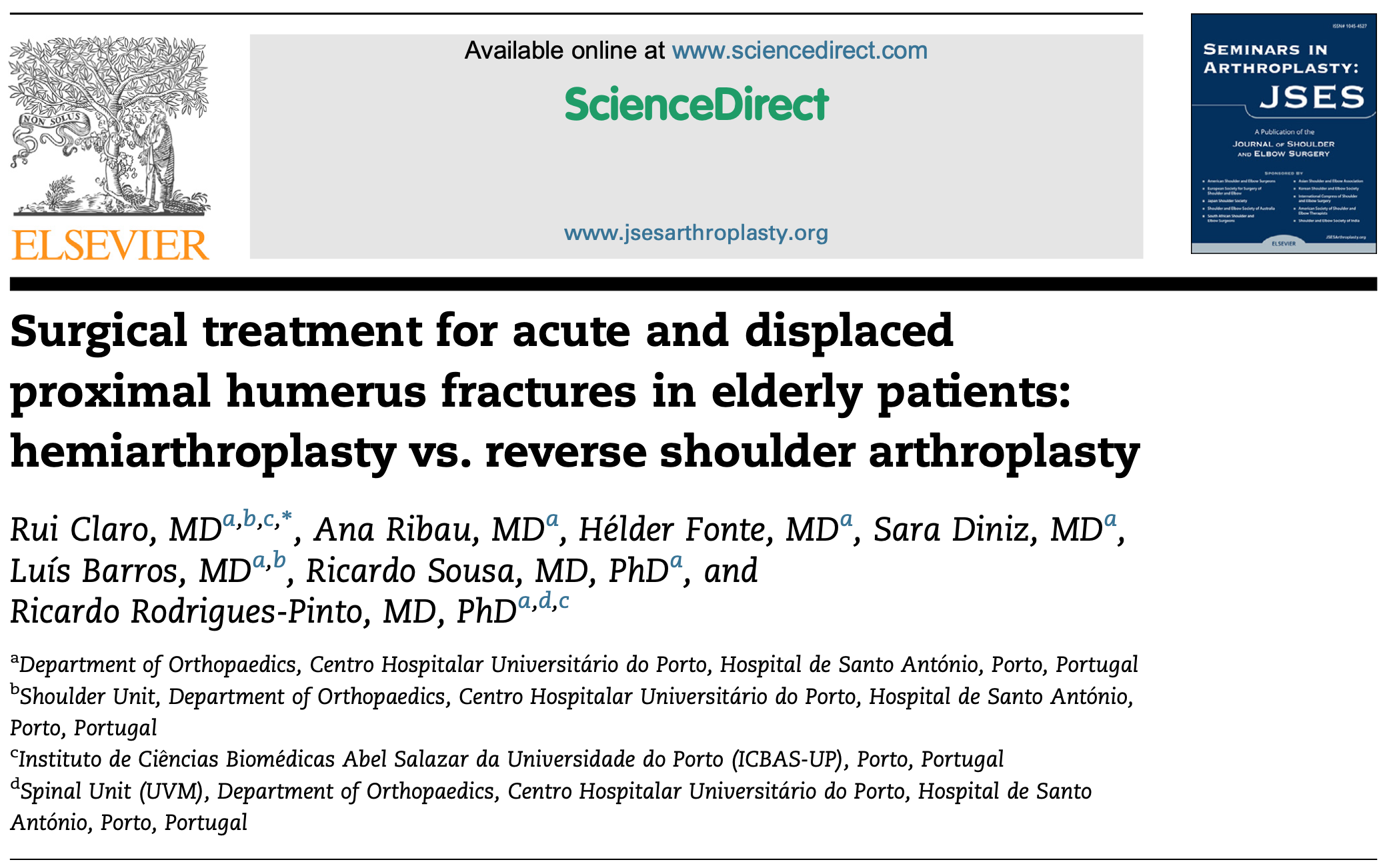Abstract
Background
Proximal humerus fractures (PHFs) are the third most common fractures in elderly patients.
The best treatment option on this population is still a topic of discussion. Reverse
shoulder arthroplasty (RSA) has increased popularity as a viable treatment option
for these fractures. Yet, few studies demonstrate the risk factors for mortality after
this procedure.MethodsThe authors present a retrospective study including patients older than 75 y with
acute and displaced PHFs primarily treated with RSA or hemiarthroplasty in a public
hospital between January 2004 and January 2020. The exclusion criteria were pathologic
fractures and more than 6 weeks to surgery. Survival curves were obtained using the
Kaplan-Meier method and the log-rank test was performed to compare survival rates.
Results
A total of 73 patients met the inclusion criteria. The mean age at the time of fracture and surgery was 78 y old, 10 males and 63 females, with a median clinical follow-up of 64 months (standard deviation 34). Forty-one patients (56%) had an American Society of Anesthesiologists score of 2. Twenty-eight patients were submitted to hemiarthroplasty and 45 to RSA. Regarding hemiarthroplasty, only one patient with hemiarthroplasty died within a year, and the 5 y survival rate was 70%. Concerning to RSA group, five patients died within a year, and the survival rate at 5 y was 66.2 %. The American Society of Anesthesiologists score (P < .001) was the only risk factor identified for mortality at 5 y. Hemiarthroplasties had more prosthetic loosening compared with RSA (P = .024). Three hemiarthroplasties were converted to RSA, and we verified 1 RSA infection. In the group of hemiarthroplasties, 56% returned to their normal daily living activities, while in the RSA 92% did that, representing a significant difference (P = .007).
Conclusion
RSA as a primary treatment for displaced PHFs had a high survival rate (88.9% at 1 year and 66.2% at 5 y) and better functional results comparing to patients treated with hemiarthroplasty. With proper patient selection, RSA is a safe procedure for the treatment of PHF, especially in an elderly population.
Rui Claro, MD; Ana Ribau, MD; Hélder Fonte, MD; Sara Diniz, MD; Luís Barros, MD; Ricardo Sousa, MD, PhD; Ricardo Rodrigues-Pinto, MD, PhD DOI:https://doi.org/10.1053/j.sart.2022.06.005


